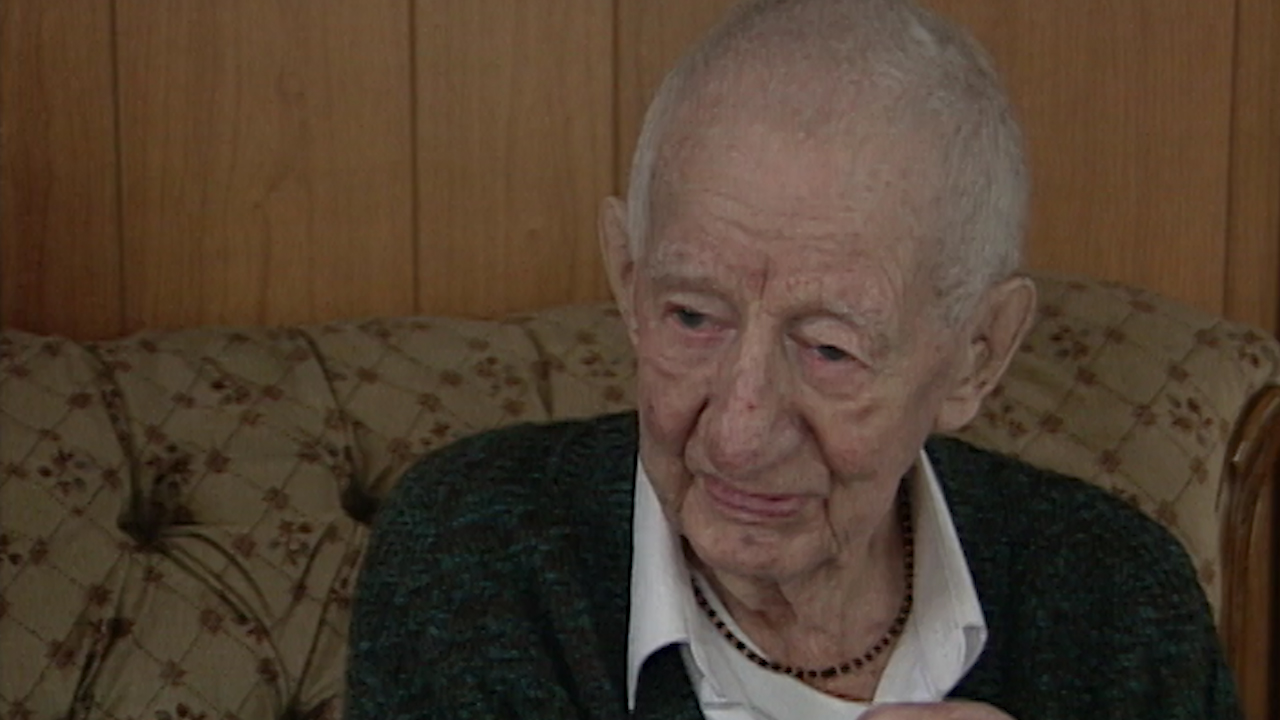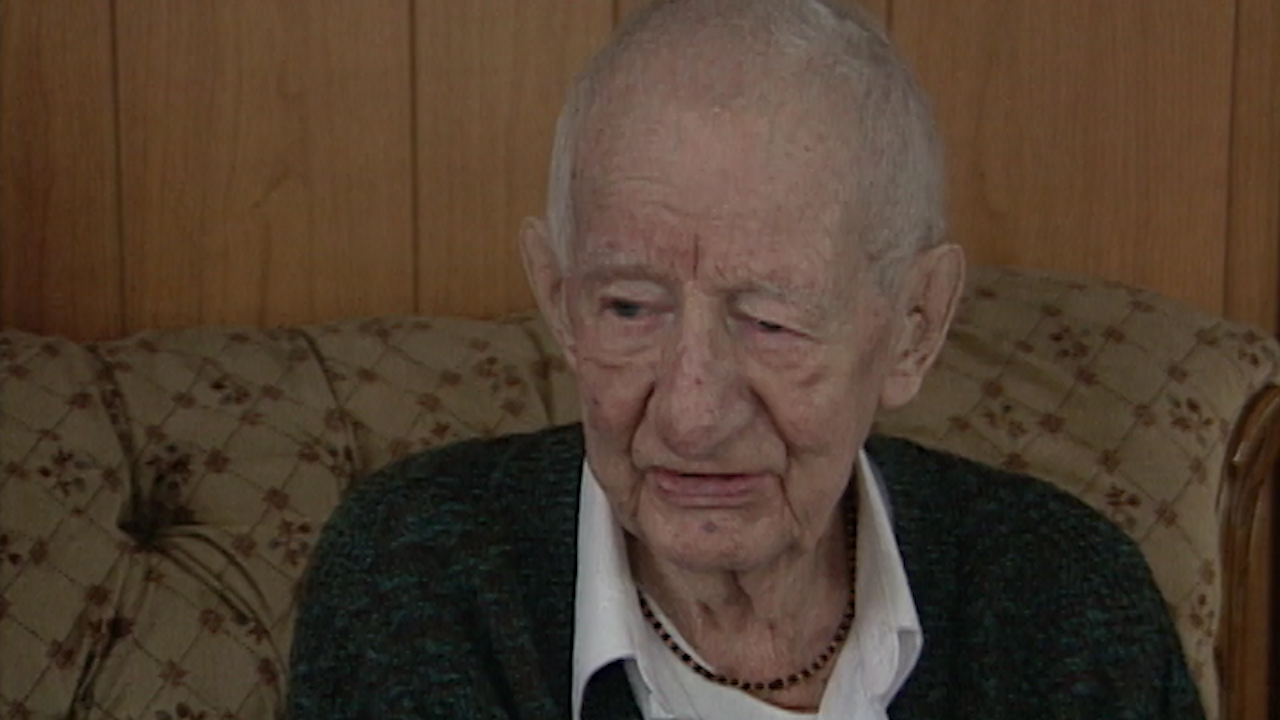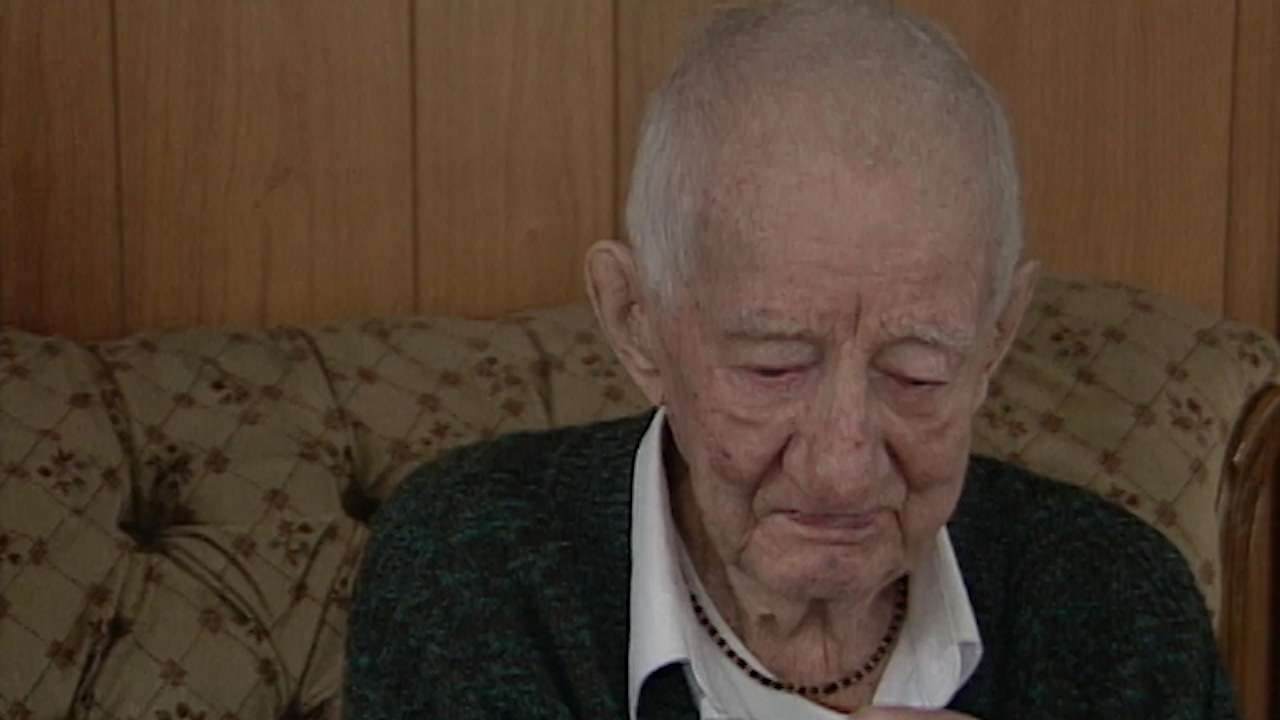Repairing Damaged Wires
Heroes Remember
Repairing Damaged Wires
Transcript
Yeah we had reels of wire that used to run along
the ground and any place as out of sight of the
enemy line, we'd some times put them over,
up on trees, crossing crossroads, you know.
Threw it on the tree and down the other side.
So that's when you weren't in sight
of the enemy line.
Oh sometimes a shell would land on the line
and cut it and or a bit of shrapnel or
something like that.
Maybe the enemy found it lying on the
ground and they just snipped it to make
sure that they'd break our communications.
We had to go out and run the wire through
our hands and we came to the end of it and
we always went in twos.
One fellow held the end and the other fellow
scouted back and forth across until he found
the other end and then we repaired it.
Mostly in the night time. We couldn't do that
in the daytime because it was too obvious.
Description
Mr. MacDougall describes the process of running telephone wires, the various ways wires could be severed, and having to repair after dark.
Alec MacDougall
Alec MacDougall was born on September 20, 1896 in Glace Bay, Nova Scotia. His father was a miner and also owned a farm. Mr. MacDougall finished grade 10, then worked at the local foundry until enlisting in the Army in 1916. His Battalion, the 185th Cape Breton Highlanders trained at Camp Aldershot, Nova Scotia before sailing to England aboard the SS Olympia. He deployed to France as a signaler with the 4th Division, and saw action most notably at Arras and Amiens.
Meta Data
- Medium:
- Video
- Owner:
- Veterans Affairs Canada
- Duration:
- 1:34
- Person Interviewed:
- Alec MacDougall
- War, Conflict or Mission:
- First World War
- Branch:
- Army
- Units/Ship:
- 185th Cape Breton Highlanders
- Occupation:
- Signaller
Related Videos
- Date modified:





